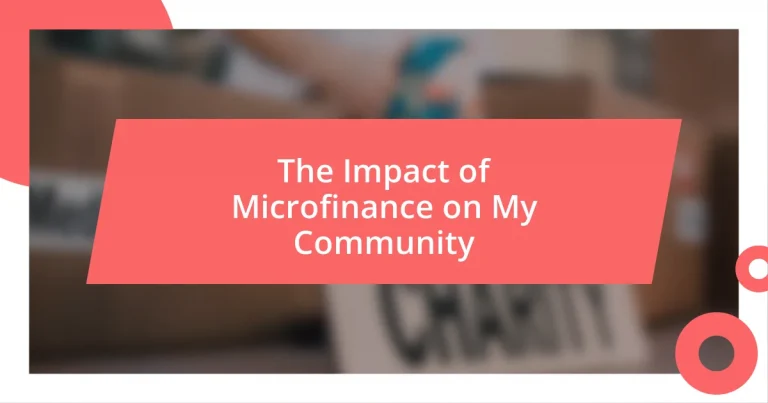Key takeaways:
- Microfinance provides crucial financial services, including loans, savings, and insurance, empowering individuals to improve their lives and businesses.
- Community support systems enhance the effectiveness of microfinance, with peer networks and educational workshops fostering entrepreneurship and financial literacy.
- Challenges such as high interest rates and lack of financial knowledge underscore the need for supplemental education and fair lending practices to ensure sustainable success for borrowers.

Understanding Microfinance Basics
Microfinance, at its core, is about providing financial services to those typically excluded from traditional banking. I remember sitting in a community meeting where a local woman shared how she accessed a small loan—then used it to grow her tiny cooking business. It struck me how such a seemingly small amount could spark a significant change in someone’s life.
What I find fascinating about microfinance is the diverse range of services it offers, beyond just loans. For instance, there are savings programs and insurance products designed specifically for low-income populations. It makes me wonder: how many people could benefit from financial tools that cater to their unique situations instead of forcing them into a one-size-fits-all model?
The emotional impact of microfinance can’t be overstated. It’s not just about money; it’s about empowerment. When I saw a friend lift herself out of poverty because of a micro-loan, my heart swelled with pride for her. Isn’t it inspiring to think that, with the right support, individuals can rewrite their own stories?
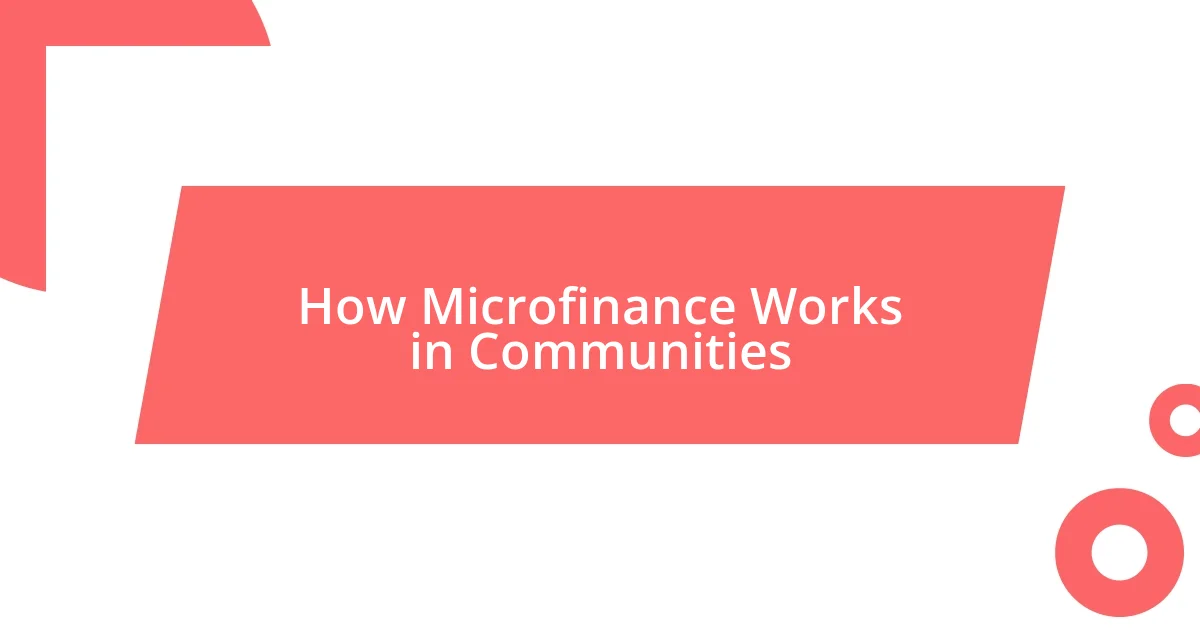
How Microfinance Works in Communities
Microfinance operates within communities by creating a support system that encourages entrepreneurship and self-reliance. I remember visiting a local cooperative where members shared their experiences post-loan approval. One gentleman spoke passionately about how he turned a dilapidated bike repair shop into a thriving business that now supports his family. It’s moments like these that truly illustrate the ripple effect of microfinance.
- Empowerment through Knowledge: Community members often attend workshops that teach essential business skills, financial literacy, and savings strategies.
- Peer Support Networks: Borrowers typically form groups where they motivate and hold each other accountable, fostering a strong sense of community.
- Access to Diverse Financial Products: Beyond loans, communities benefit from tailored savings accounts and insurance, crucial for their unique financial challenges.
In my journey, seeing these dynamics play out has been eye-opening. It resonates with me when community members invest in each other’s success, creating a cycle of growth and trust that truly nurtures their environment.
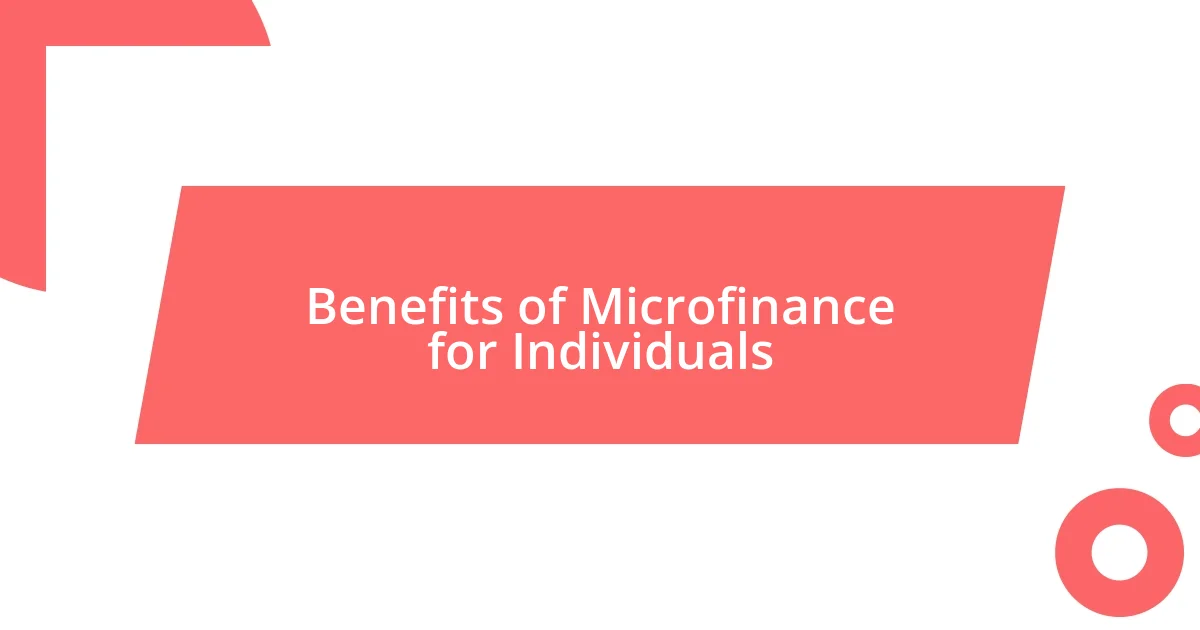
Benefits of Microfinance for Individuals
One of the most remarkable benefits of microfinance for individuals is the ability to access capital that would otherwise remain out of reach. I recall meeting a young woman who, with a small loan, was able to purchase sewing equipment. The joy in her eyes when she talked about how she now runs a successful tailoring shop was unforgettable. It’s something I think about often: how many dreams remain unrealized due to a lack of financial resources?
Microfinance also fosters a sense of responsibility and discipline in financial management. During a community meeting, a local baker shared how the process of applying for her loan taught her budgeting skills. She mentioned feeling more in control of her finances and even saving for future goals. To me, that transformation is profound; it shows how microfinance doesn’t just provide funds—it cultivates a mindset shift, empowering individuals to make informed financial decisions.
The emotional uplift from microfinance is often overlooked but is incredibly significant. I remember a father sharing his story of how a micro-loan helped him buy livestock, leading to not just increased income but a newfound pride in supporting his family. Seeing him beam with pride made me realize that these loans offer more than just economic benefits; they can reshape lives and restore dignity. It’s heartwarming to think that an injection of capital, however small, can lead to such meaningful change.
| Benefit | Description |
|---|---|
| Access to Capital | Individuals can obtain funds to start or expand small businesses, turning dreams into reality. |
| Financial Literacy | Microfinance often includes education on budgeting and managing finances, promoting responsible financial habits. |
| Empowerment and Dignity | The emotional and psychological uplift from achieving financial independence positively shapes self-worth and family dynamics. |
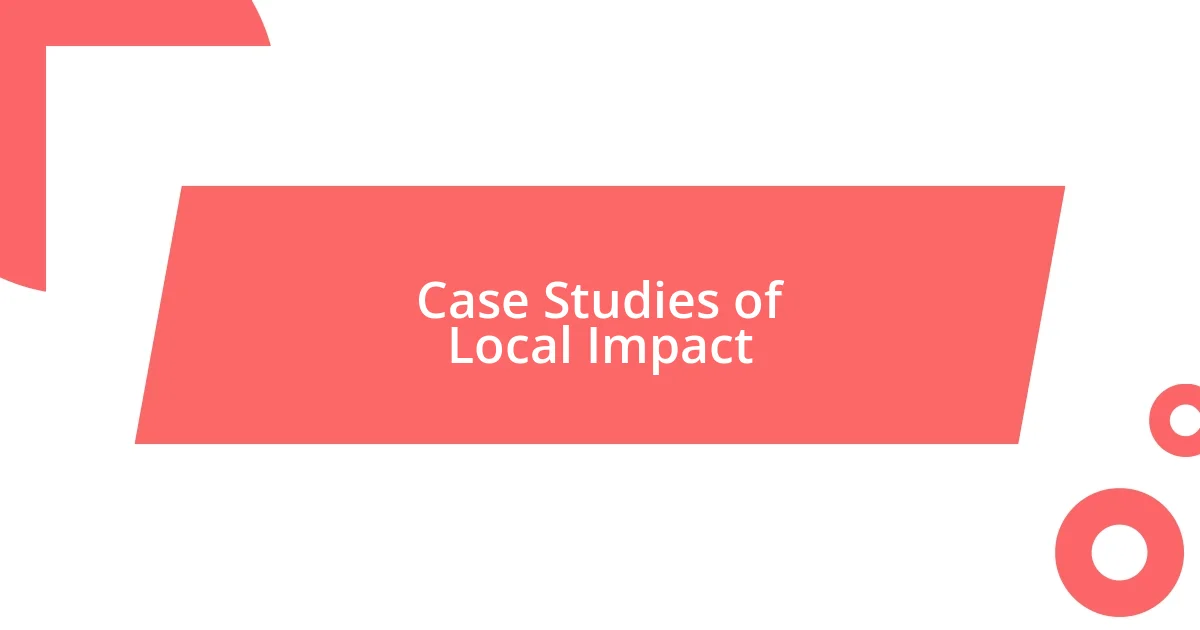
Case Studies of Local Impact
One inspiring case study that stands out is that of a local farmer who accessed microfinance to purchase high-quality seeds and fertilizers. I vividly remember visiting his farm and marveling at how his once barren land transformed into a flourishing field. It struck me that a simple loan could have such a profound impact—not just on his income but on his entire family’s livelihood. How many families could experience this kind of transformation with just a little bit of financial support?
Another heartwarming example involves a young couple who opened a small café together. They pooled their micro-loan funds to revamp a rundown space, creating a cozy gathering place for the community. During a chat with them, they expressed how vital this venture was, not just for their financial stability but also for their sense of belonging. It made me wonder—could nurturing local businesses be the key to healthier, more connected communities?
Lastly, I recall attending a community event where several micro-entrepreneurs showcased their products. It was an exhilarating experience, filled with laughter and camaraderie. A local craftsman proudly displayed handmade furniture that had become quite popular. Listening to his story about how the initial loan sparked his creativity and encouraged others to invest in local talents was uplifting. It really drove home the point that microfinance doesn’t just create businesses; it cultivates a culture of innovation and collaboration within the community.
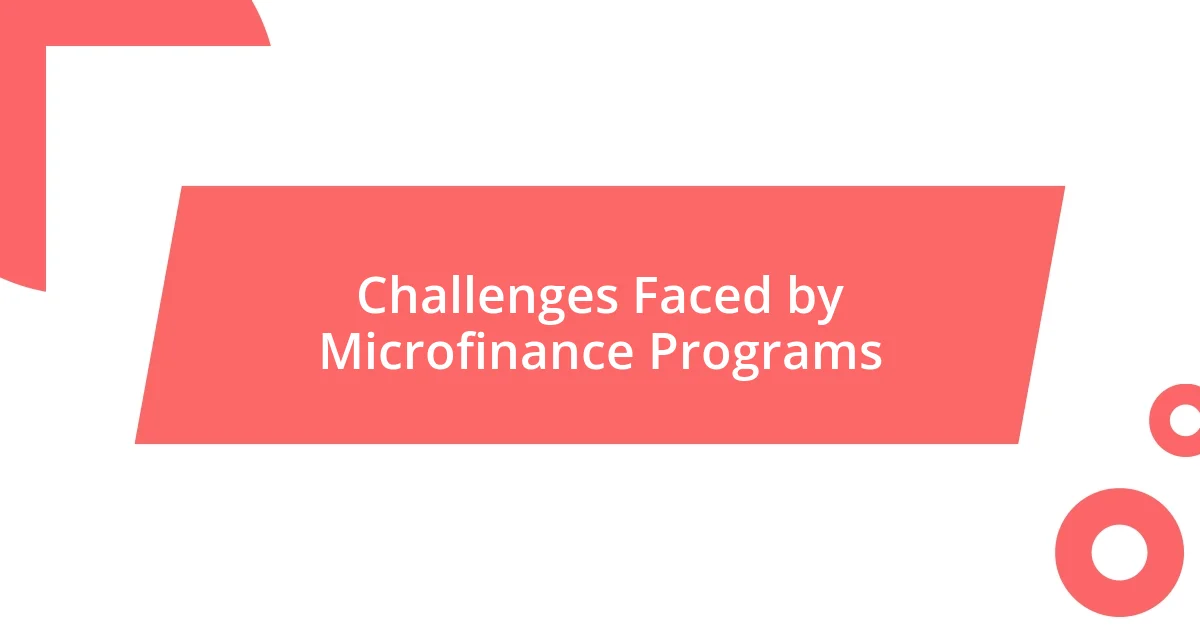
Challenges Faced by Microfinance Programs
Challenges in microfinance programs are often more complex than they appear. For instance, I once met a group of women who had taken loans to start a joint enterprise, but they struggled with repayment due to unforeseen circumstances, like bad weather that affected their sales. This experience made me think: how many promising projects derail because of factors beyond control? It’s a reminder that while the intent behind microfinance is noble, external circumstances can easily turn hope into hardship.
One major issue is the lack of financial literacy among borrowers. During a workshop I attended, it became clear that despite receiving loans, many individuals didn’t fully grasp the intricacies of managing debt and budgeting their finances. I watched one participant struggle to differentiate between profit and loss, which was eye-opening. How can we expect individuals to thrive when they don’t quite understand their financial landscape? It solidified my belief that education must accompany funding if we want to see real change.
Another pressing challenge is the high interest rates some programs impose. I remember discussing this with an entrepreneur who, despite successfully launching her business, found herself trapped in a cycle of debt because of escalating repayment demands. She expressed her frustration, saying it felt like she was running to stand still. Isn’t it vital for microfinance to remain a truly supportive resource? Without fair lending practices, many well-meaning individuals risk losing more than they gain.
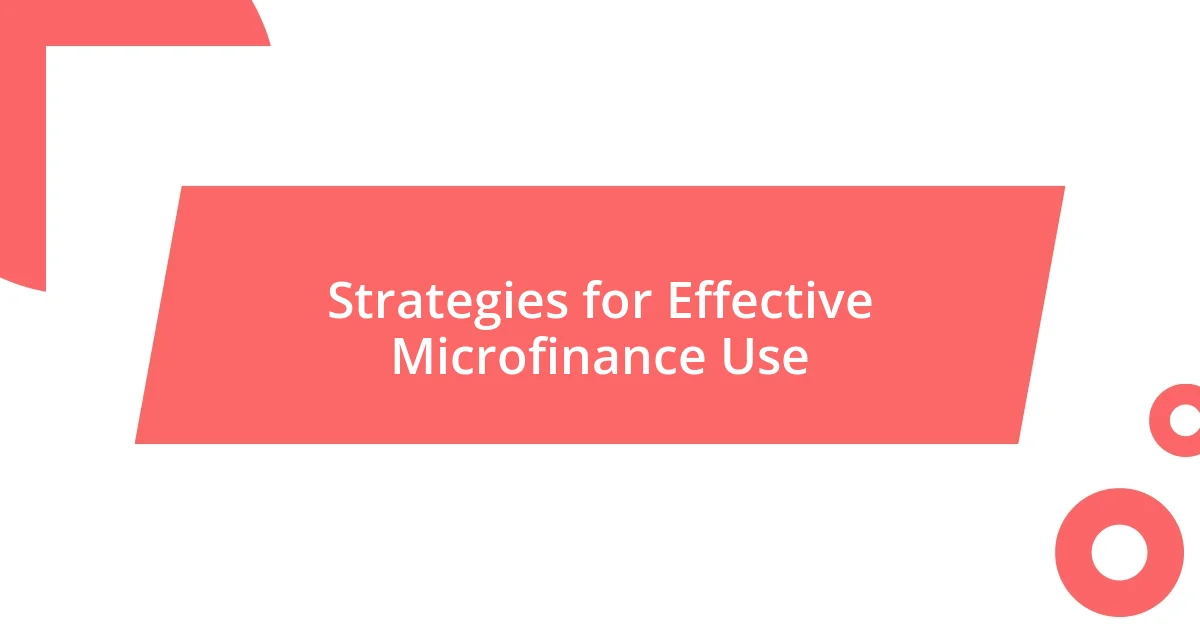
Strategies for Effective Microfinance Use
One effective strategy for utilizing microfinance is to prioritize financial education alongside the loans. I once attended a program where participants engaged in hands-on workshops that explained budgeting and savings. Watching them gain confidence in managing their finances was inspiring—it’s as if a light bulb went off for many. Have you ever considered how understanding basic financial principles could empower borrowers to make smarter decisions?
Networking can also play a crucial role in maximizing the impact of microfinance. I remember a gathering where aspiring entrepreneurs exchanged ideas and shared resources. The energy in the room was palpable, filled with collaboration and creativity. Isn’t it fascinating how the synergy between individuals can lead to innovative solutions? When people come together, they can amplify their strengths and tackle challenges collectively, creating a support system for success.
Lastly, it’s vital to remain adaptable. I once spoke with a micro-entrepreneur whose circumstances changed due to unexpected market shifts. Instead of letting fear take over, she repositioned her business model to meet new demands. I was truly impressed by her resilience. Don’t you think that flexibility and quick thinking can be powerful assets in an ever-evolving marketplace? Embracing change can turn potential setbacks into new opportunities for growth and enrichment.












